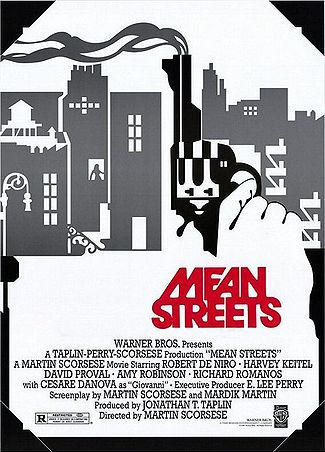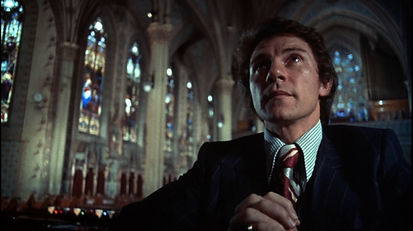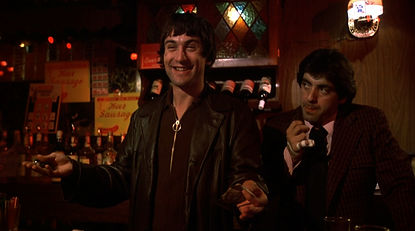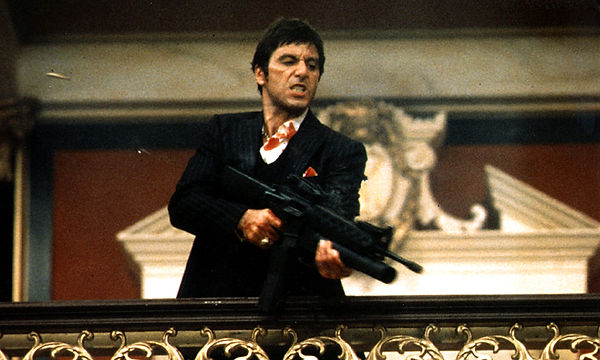Milo Media
Location:
Mostly urban areas, bars, rundown apartments, restaurants, warehouses
and sometimes churches.
Cars are often used a lot
Costume:
Often dark suits, leather jackets,
white vests, police uniform.
Anti-hero: The main characters of crime films are often immoral and/or criminals
Often motivated by power, money or revenge
Use of props: Guns, Money, Cigarettes.
Mis-en-scene
Character type
Crime/Gangster
Character traits:
street smart, crazy, psychopathic, deceptive, self motivated, poor, extremely wealthy, motivated
Often not in chronological order
Narrative
Centered around violence, murder, brawling, gun fights
Often not a strong or clear story line, just showing the general lives of the characters
Mean streets

Synopsis:
Charlie (Harvey Keitel) is a young Italian-American man who is trying to move up in the local New York Mafia but is hampered by his feeling of responsibility towards his reckless younger friend Johnny Boy (Robert De Niro), a small-time gambler who owes money to many loan sharks. Charlie works for his uncle Giovanni (Cesare Danova), the local caporegime, mostly collecting debts. He is also having a secret affair with Johnny Boy's cousin Teresa (Amy Robinson), who has epilepsy and is ostracized because of her condition.
This is the opening credit scene for mean streets
Mean streets analysis


Mis-En-Scene: Costume
The protagonist wears suits throughout the whole film representing the characters professionalism and his need to look smart in order to impress people like his uncle. Suits are worn by mostly all the male characters as the mob and criminal organizations because criminals who earn money through organized crime consider themselves to be legitimate businessmen, therefore they want to dress like businessmen. Also, these gangsters tend to make a lot of money and may have an impulse to show off their wealth with expensive clothing. These suits are therefore a convention for crime films as a lot of crime films involve criminal organization.
Mis-En-Scene: Location
The protagonist is also in a church, this reinforces the stereotypes of a New York gangster having certain morals and being more civilized than your average criminal. A church represents a hope in change and forgiveness showing that the main protagonist may have some morals. As well, this fits the stereotype of New
Mis-En-Scene: Costume
Robert De Niro's character (left) is one of the only male main characters who doesn't always wear a suit. This could represent the characters rebellious and reckless nature as he doesn't seem to want to follow the rules and expectations of the other characters and the mob which is compounded by his actions as he draws a gun on someone and doesn't pay his debts. He seems to subvert the stereotypes of a criminal involved in the mob by not being so civilized. Yet in the end, he pays for this as he is killed and never makes it deeper into the mob. This could highlight the violent nature of gangsters and their need for professionalism and secrecy. The character doesn't fit the convention of a typical gangster and pays for that which is typical of any characters in crime movies are seen as weak or reckless.
Sound
In the final scene of mean streets, contrapuntal diegetic joyful folk-style music is used to contrast the violence on screen, this accentuates the action and may be highlighting how the gangster life was embedded into the New York culture and everyday life. Soundtrack dissonance is also used in other crime films like Tarantino's Reservoir dogs when a cop is being tortured and diegetic upbeat music is played on the radio.
Editing
In this clip cross-cutting is used between the crash scene and the lives of other characters. This could again suggest how time still moves on, by linking the other characters and the crash scene it may be suggestive of how reckless people like Robert De Niro's character are not cut out for the gangster life, but the other wiser characters who stay away from him come out fine in the end. Cross-cutting is also used in another gangster movie, The Godfather. While Micheal attends a baptism in church it cuts to his mobsters killing people, this suggests how criminals must keep up appearances. On a deeper level it could be metaphorical for perhaps a rebirth of the Corleone family under the new Godfather.
York gangsters being Sicilian immigrants, as Sicily and Italy are deeply catholic places it is clear these religious views have come over to America. A church is, therefore, a crime convention especially in terms of the Mafioso/gangster side of the genre. This is also a location in other gangster movies like the Godfather where Micheal attends a baptism in a church.
Mis-En-Scene: lighting
Natural lighting is throughout and in the bar there is often not much light, this could highlight the dark and often murderous lives these gangsters lead.
Scarface

Synopsis
Tony Montana (Al Pacino) immigrates to 1980's Miami and builds a cocaine empire.








Camera
